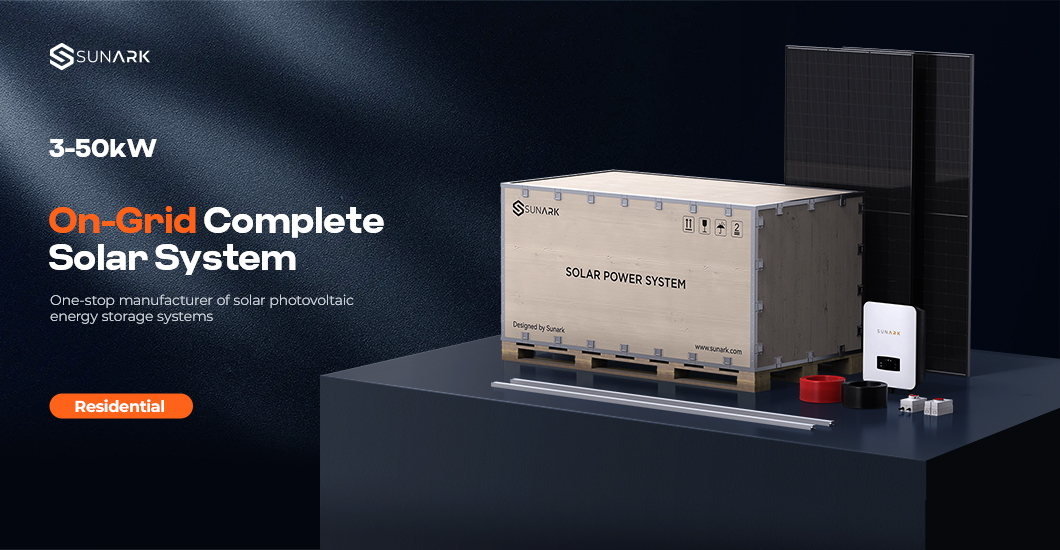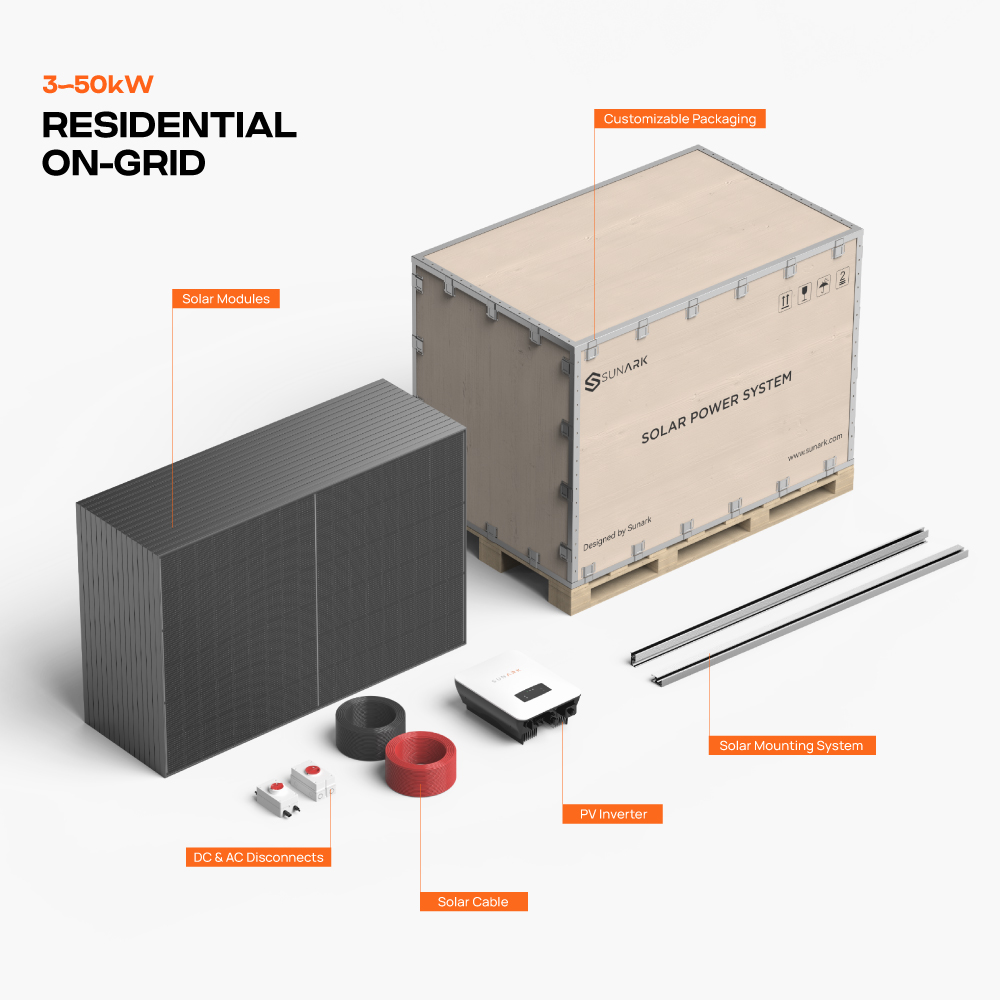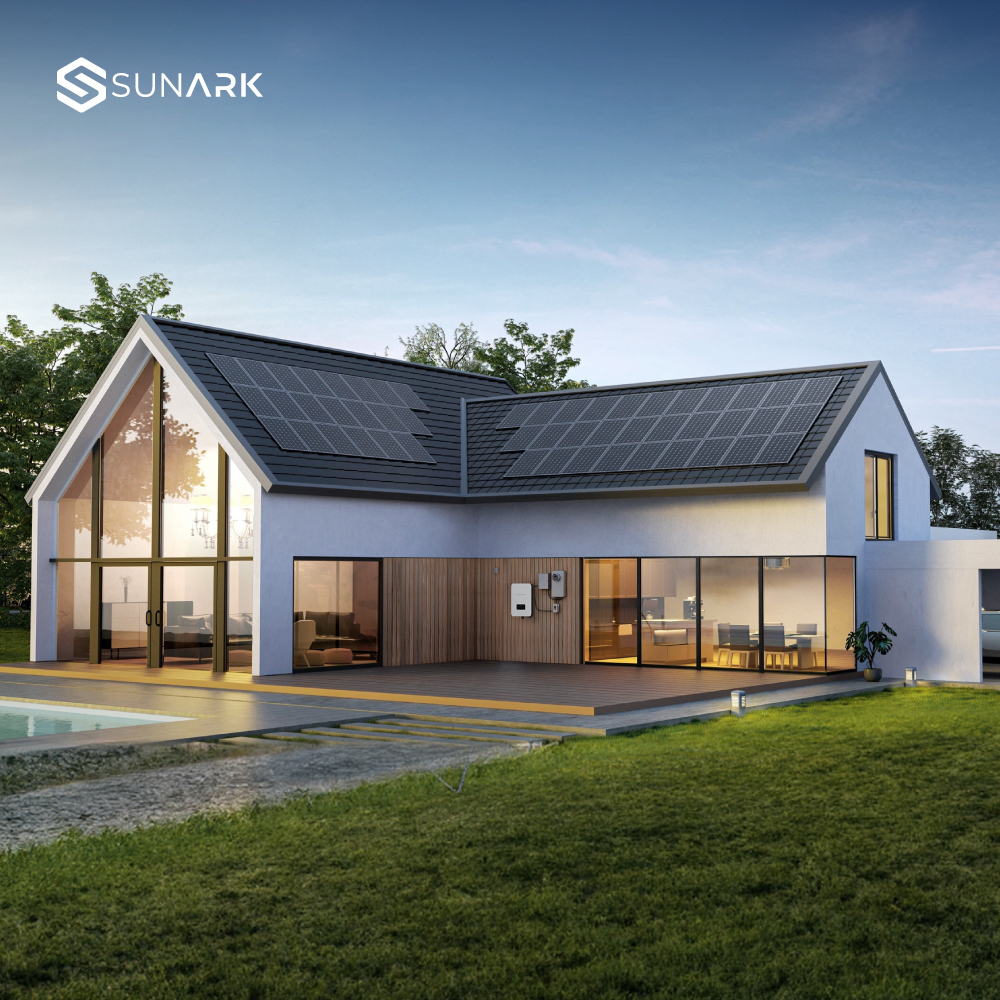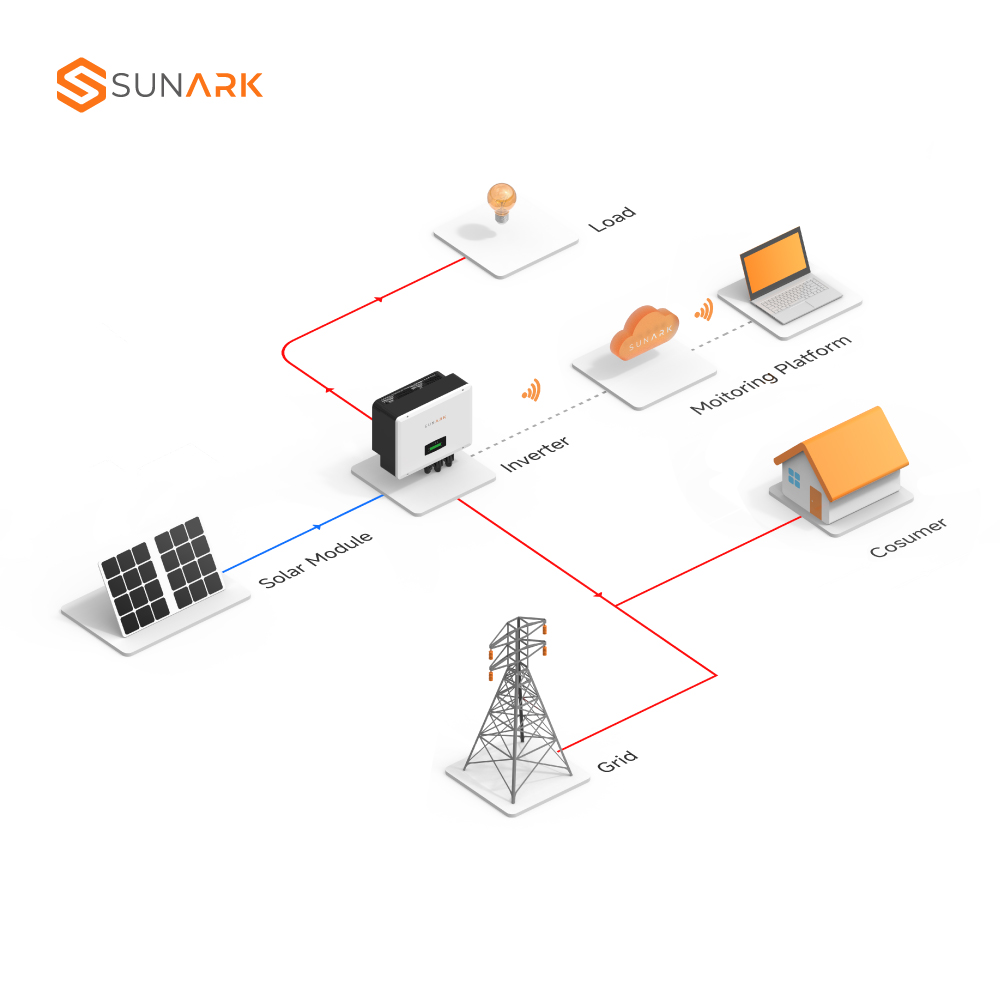Solar systems offer a cleaner, more sustainable, and cost-effective solution for generating electricity compared to generators.
Model:
SE3-50KW-ONPV Panel:
550WInverter Power:
3-50KWAccessories:
Cable,Connector,PV toolsMountings Rack:
CustomizedApplication:
Roof and GroundOEM:
Supported
Residential on-grid solar system, also known as a grid-tied solar system, is a solar power system that is connected to the electricity grid. It allows homeowners to generate their own electricity from solar panels and use it in their home while also being able to take electricity from the grid when needed.

Here's how a typical residential on-grid solar system works:
Solar Panels: The system starts with the installation of solar panels on the roof or in an area with good sun exposure. These panels are made up of individual solar cells that convert sunlight into direct current (DC) electricity.
Inverter: The DC electricity generated by the solar panels is sent to an inverter. The inverter's primary function is to convert the DC electricity into alternating current (AC) electricity, which is the type of electricity used in households.
Electrical Load Consumption: The AC electricity produced by the inverter is then used to power the electrical loads in the home, such as appliances, lights, and electronics. The solar energy generated by the panels is prioritized for consumption within the home.
Grid Connection: If the solar system produces more electricity than the home's current demand, the excess electricity is fed back into the grid through a bi-directional meter. This excess electricity can be credited to the homeowner's electricity bill, resulting in potential savings.
Grid Supply: When the solar system does not produce enough electricity to meet the home's demand (e.g., during nighttime or when there is insufficient sunlight), electricity is automatically drawn from the grid to ensure a continuous power supply.
Net Metering: Net metering is a billing arrangement that allows homeowners to receive credits for the excess electricity they generate. If the solar system produces more electricity than what is consumed in a billing period, the excess electricity is fed back into the grid and credited to the homeowner

The main feature of an on-grid, or grid-tied, solar system is its connection to the electric grid. Here are some key features of on-grid solar systems:
Grid Connection: On-grid solar systems are connected to the local utility grid. They work in conjunction with the grid to supply electricity to your home or business.
Net Metering: One important feature of on-grid systems is net metering. When your solar panels produce more electricity than you need, the excess is fed back into the grid. In return, you receive credits from the utility company, which can be used to offset the electricity you consume from the grid when your solar panels aren't producing enough power.
Cost Savings: By generating your own electricity, on-grid solar systems can help reduce or eliminate your electricity bills. The excess power you produce can offset the energy you consume from the grid, resulting in potential cost savings over the long term.
Environmental Benefits: On-grid solar systems help reduce greenhouse gas emissions and promote clean energy production. By generating electricity from the sun, you're reducing the need for traditional fossil fuel-based power generation, which helps to mitigate the impacts of climate change.
Grid Stability: On-grid solar systems can contribute to grid stability by providing additional power during periods of high demand or emergencies. However, they don't provide power during grid outages for safety reasons. This is to prevent solar-generated electricity from being fed back into the grid and posing a risk to utility workers.
Scalability: On-grid solar systems can be designed to meet different energy needs. You can start small and add more panels over time to match your increasing energy requirements or to maximize your solar energy generation capacity.
Easy Maintenance: On-grid solar systems are typically easier to maintain compared to off-grid systems. Since you're connected to the grid, any issues can usually be addressed by your local utility or a professional solar installer.
It's important to note that on-grid solar systems are dependent on a stable grid connection. In the event of a power outage, your system will not supply electricity unless you have additional equipment, such as a backup power source like batteries a generator.

People choose solar systems over diesel generators for several reasons:
Renewable Energy: Solar power is a clean, renewable energy source that relies on sunlight, which is abundant and free. Unlike a diesel generator, which requires fuel (typically diesel or gasoline) to operate and emits pollutants, solar systems generate electricity without relying on non-renewable resources or producing harmful emissions.
Cost Savings: While the initial cost of installing a solar system can be higher compared to a diesel generator, solar systems have lower operating costs in the long run. Once installed, solar systems generate electricity at no additional cost, whereas diesel generators require ongoing fuel purchases. Over time, the savings on fuel costs can offset the initial investment.
Environmental Impact: Solar power is a sustainable energy solution that contributes to reducing greenhouse gas emissions and combating climate change. Diesel generators, on the other hand, release carbon dioxide (CO2), nitrogen oxides (NOx), sulfur dioxide (SO2), and particulate matter into the atmosphere, contributing to air pollution and environmental degradation.
Noise and Maintenance: Diesel generators are typically noisy and require regular maintenance, including fuel refills, oil changes, and filter replacements. Solar systems, on the other hand, operate silently and have minimal maintenance requirements. With no moving parts, solar panels are durable and can last for decades with proper care.
Grid Independence: Solar systems allow homeowners to become more self-sufficient by generating their own electricity. This reduces dependence on the electrical grid and provides a reliable source of power
FAQs:
Q1: Do you support OEM/ODM?
A:Definitely, OEM&ODM service is supported with a certain quantity,including customize logo,package and label;
Q2: What's the production time?
A: The production time is normally 15 working days. but we will always prepare some stocks for popular models.
Q3: Can you provide DDP service?
A:Yes, if you are a personal customer and don't want to deal with the customs, we can provide DDP service to your address.
Q4: What about the warranty and how to claim?
A: Warranty period are 10 years since you receive the product, our professional after-sales team will deal with all warranty issues.